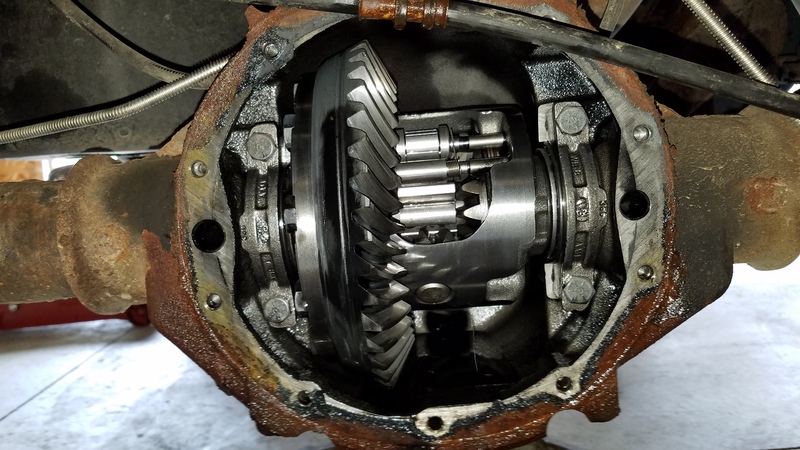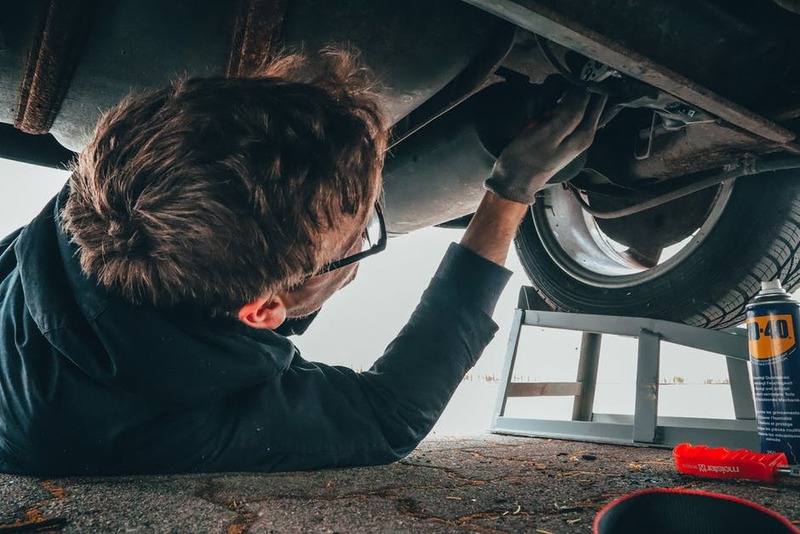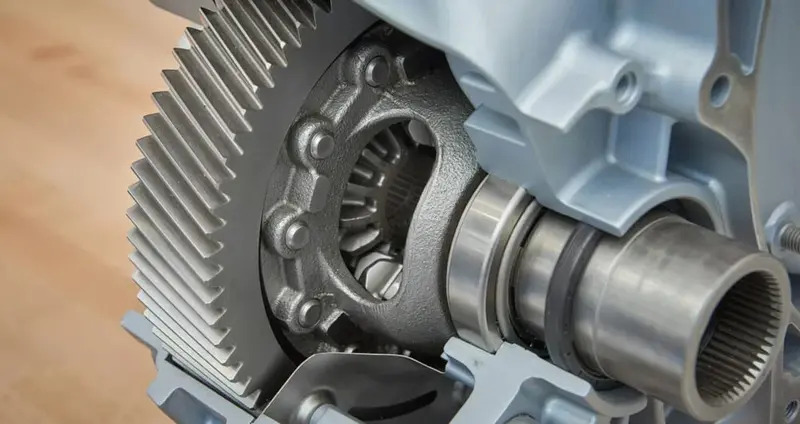The differential enables all tires on the vehicle to move at relative speeds to each other in every driving condition.
However, the differential is a mechanical system and can get bad or even break down at most. So, what do you in that situation?
This article will focus on the symptoms of bad Rear Differential, It will also examine the causes, solutions, and replacement costs of a bad rear differential.
Let’s get started!
How the Rear Differential Works
A differential in any vehicle transfers torque, power, and speed from the transmission to a pair of wheels on the same axle at appropriate speed ratios via the drive shaft.
Considering the prefix “rear,” we can describe a rear differential as the differential on the rear axle that transfers torque, power, and speed from a transmission to the rear wheels.
As previously mentioned, the rear differential is a gear mechanism; its gear mechanism allows It to transfer power and torque from the engine to the rear wheels at varying speeds.
You might wonder why the differential transfers power and torque at varying speeds, but the answer is simple.
During a turn, while driving, both wheels on the same axle cannot drive at the same speed as the difference in radial distance will need the inside wheel to lag behind the outside wheel for a perfect turn.
Suppose the vehicle is built to have rear-wheel drive. In that case, there is a paramount need for the rear differential to compensate for the difference in radial distance and appropriate the adequate speed and frequency of turning the wheels in the rear axle with the torque and speed received from the driveshaft.
The rear differential function’s whole phenomenon to achieve a perfect turn is based on the ring and pinion ratio principle.

Function of the Rear Differential
Like any other differential, the rear differential transfers the exact proportions of power torque and speed to the wheels mounted on the rear axle.
The wheels mounted on the rear axle in a vehicle must run at varying speeds during turns or circular motions made by the vehicle to ensure the car’s stability.
In essence, each rear wheel needs to have a level of Independence when the vehicle is swearing or driving through a bend; this is only possible by a rear differential.
The rear differential also ensures that the strain on the tires will keep differential components and drivetrain at a minimum.
Also Read: Low Engine Oil Pressure (Causes & Solutions)
What Are Some Notable Symptoms of Bad Rear Differential?
Your Tire Becomes Bad
Whenever you have a bad rear differential, you will also observe that one or both of your rear tires have one out significantly even before reaching the quarter Mark in their lifespan.
A faulty rear differential will also cause uneven tire wear over time. You will notice that the inner part of the tires wears out faster than the outer part of the tires; it is important to visit the mechanic and get this fixed
The Grinding of your Gear
Since the rear differential works on the principle of gears, whenever the gears within the rear differential housing have a problem, more noticeable humming noises will result from gears grinding against each other.
The Car Produces Uncontrolled Vibrations
You will also experience a lot of vibrations while driving with a bad rear differential. The vibrations result from worn-down tires, universal joints, and increased difficulty in handling. The vibrations are usually more intense if you have a differential fluid leak.
Become Difficult to Drive Smoothly
A faulty rear differential will result in increased handling difficulty while driving. The driver will observe this handling difficulty more while driving through bends and corners or in a circular pattern. Difficulty handling your vehicle is a precarious situation as it could lead to an accident; therefore, you must seek a professional mechanic to fix the issue as soon as possible.
You May Experience Whining Noise
Another symptom of a bad rear differential is whining noises from the rear differential housing while driving.
You May Notice a Leaking Differential Fluid
Leaking differential fluid is another sign of a faulty rear differential, as there will be reduced lubrication within the gear mechanism, which allows the rear differential to function properly, increasing wear and overheating of the rear differential.
A damaged gasket, ring, or seal could cause the leak. For a more severe case of the differential fluid leak, you will notice structural damage, most probably a crack on the rear differential housing. Whenever you notice any of these, you must visit your mechanic and get it fixed.
What Causes A Bad Rear Differential
The human factor is a major cause of rear differential problems as a reckless driver will always push their rear differential beyond its limits while driving. If the rear differential cannot handle or withstand the cyclic and massive stress dished out on its components by the driver, it will most likely fail soon.
Another cause of a faulty differential is using inappropriate oil as a differential oil. The recommended differential oil by the manufacturers always has a certain viscosity and lubrication ability. Hence if the oil you use does not match these factors, it can cause oil leaks or increased friction within the differential housing.
One major cause of a faulty differential is a low differential oil level within the rear differential housing. A lack of differential oil in the rear differential will increase friction among the gears in the differential gear mechanism, and a worn-down seal, a cracked housing, or a compromised gasket often cause this lack.
Over time the rear differential is expected to wear down as its primary base of operations requires the contact of metallic surfaces at high speeds. Therefore whenever a rear differential has exceeded its lifespan begins to where causing problems for the driver.

What Are the Repair Options for a Rear Differential?
- For extreme cases where none of the above repair options tend to fix the issue with your red differential, you will need to replace the entire unit.
- You can always replace your rear differential gasket with a new one or augment it with a rubber or silicone gasket maker.
- The piston and side can also be sealed to stop massive leakage of differential fluid from the rear differential. This repair option is usually if the task.
- Whenever you begin hearing a grinding or humming sound, you will likely have to replace one or the two bearings in the rear differential.
How Much Does It Cost for Differential Replacement?
Replacing the differential can cause you anywhere between $1000 to $5000.
Also Read: Transmission Cooler Line Leak At Radiator (Causes & Fix)
Frequently Asked Questions – Symptoms of Bad Rear Differential
What does a bad rear differential sound like?
A bad rear differential sounds like a rumbling, clunking, grinding, or humming sound, and it is especially head when driving around the corner.
How much does it cost to fix a rear differential?
Depending on the problem, it can cost between $300 to $800 to fix a bad rear differential.
How long should a rear differential last?
Your rear differential fluid is to be changed every 20000 to 40,000 miles.
Conclusion – Symptoms of Bad Rear Differential
The rear differential is an important drivetrain component, enhancing vehicle handling, especially around corners. Many symptoms will indicate that your rear differential is going bad, and these symptoms have been outlined in this article. Whenever you start experiencing any of these symptoms, you should seek professional help for proper diagnosis and repairs.

